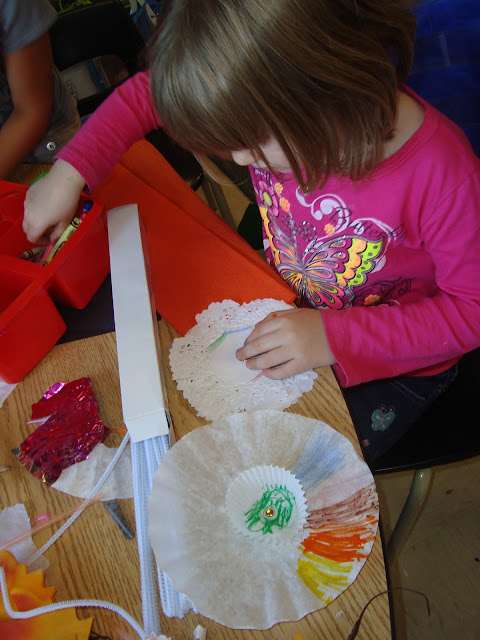When the center first opened, many children spent time at the art center creating their own flowers to be sold or used as decoration.
Others used the fabric flowers we had available to create their own creative arrangements.
A few children drew pictures of the choices of arrangements that were available to customers.
Some flowers needed to be tended; watering them in large bunches was a favourite activity.
Of course we needed an open/closed sign so the workers could indicate to the customers when the shop was open for business or "closed for clean up".
Some children loved to spend time counting all the money the shop had earned.
Others liked to record the customer's orders.
This flower shop even had a drive thru!
Using the calculator to total orders was also a favourite activity for many!
The children brainstormed a list of jobs they felt were important when working in the flower shop. We helped record these ideas and hung them up in the flower shop.
Some of the Ontario Curriculum this center fulfilled includes:
2.5 interact cooperatively with others
in classroom events and activities
(e.g., offer and accept help in
group situations, engage in
small- and large-group games
and activities, participate in
democratic decision making)
4.2 demonstrate an awareness that
writing can convey ideas or messages
(e.g., ask the teacher to write out
new words for them)
4.3 write simple messages (e.g., a grocery
list on unlined paper, a greeting
card made on a computer; labels for
a block or sand construction), using a
combination of pictures, symbols,
knowledge of the correspondence
between letters and sounds (phonics),
and familiar words
3.1 recognize people in their community
and talk about what they do (e.g.,
farmer, park ranger, police officer,
nurse, Aboriginal healer, store clerk,
engineer, baker)
3.2 recognize places and buildings
within their community, both
natural and human-made, and talk
about their functions (e.g., farm,
church, hospital, mosque, sweat
lodge, arena, mine, cave)















No comments:
Post a Comment